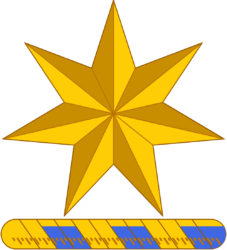This is an important question, and the answer may surprise you.
A key ruling by the High Court is Sue versus Hill from 1999.
The following quote from the article by Professor Anne Twomey discusses the High Court ruling.
In Australia, however, where sovereignty is shared in a federation which is independent from the United Kingdom, the different meanings of ‘the Crown’ are more easily identified and analysed, as they have been competing and conflicting with each other for more than a century.
The High Court of Australia made an attempt to distinguish the different meanings of ‘the Crown’ in the case of Sue v Hill. It identified the following different senses in which the term ‘Crown’ is commonly used:
Twomey, Anne, Responsible Government and the Divisibility of the Crown. Public Law, pp. 742-767, Winter 2008, Sydney Law School Research Paper No. 08/137, Available at SSRN: https://ssrn.com/abstract=1301166
- 1. the Sovereign’s regalia;
- 2. the body politic;
- 3. the international personality of a body politic;
- 4. the ‘government’ or ‘executive’; and
- 5. the office of the Sovereign and the capacity in which the Sovereign acts.
In Australia, each of the Commonwealth and the six States is a separate body politic. Joseph has argued that in this federal context the Crown is subdivisible. The Commonwealth legislation granting self-government to the Northern Territory and the Australian Capital Territory also declares that each territory is ‘established as a body politic under the Crown’. This suggests that there are at least nine Crowns in Australia in the sense of bodies politic.- Within each body politic, there is an executive government. It too, is known as ‘the Crown’, but it is a mere component of the body politic. The executive government must be distinguished from the legislature, the judiciary and the people of the body politic. Territories that have a greater degree of dependency may not themselves amount to a body politic, but may still have an executive government that takes on the attributes of a body politic. An Australian example is Norfolk Island, which is not itself a body politic, but which has an executive government, ‘the Administration’, which is given the status of a body politic with perpetual succession.
Thirdly, there is the independent sovereign nation of the Commonwealth of Australia, which has international personality and can act on the world stage. It is comprised of the bodies politic of the Commonwealth and the States. It is a single Crown, in this sense, under the rule of a body of law that is derived from different sources. Finally, there is the relationship between the bodies politic and the Queen. Neither the Northern Territory, the Australian Capital Territory nor Norfolk Island has a ‘Crown’ in this sense, because they have no vice-regal representative appointed directly by the Queen and their Ministers cannot advise the Queen with respect to any matter. Whether the States have separate Crowns or fall under one federal Crown remains a matter of contention. However, it is clear in Australia, that the number of Crowns, in the sense of executive governments, may be different from the number of Crowns, in the sense of bodies politic, which in turn may be different from the number of Crowns the
monarch might bear with respect to Australia. It is only in relation to this final meaning of Crown, however, that the question arises as to the capacity in which the Queen is acting when performing a function with respect to a territory. This was the question that arose in the Quark Fishing case.

